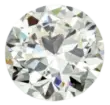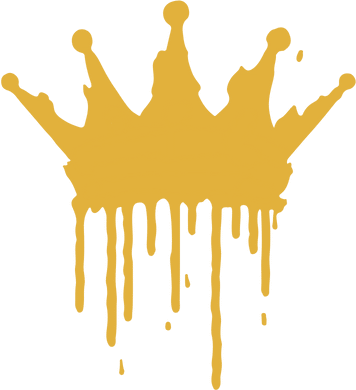 #
#
Gabrielle’s Ideals for Old European Cuts #
I’ll be honest with you – I don’t have specific ideals for antique cuts! Antique cuts are the perfect example of why we can’t just give a list of numbers to input and have a perfect diamond come out. We have two sides of antique cuts – modern antique cuts (lab diamonds that are cut in a faceting pattern of an antique stone) and recycled antique cuts (mined diamonds that are “authentic” in their antique status.) Each option offers gorgeous stones, but we have to rely on our eyes more than what the numbers say! This guide does offer overall ideals because, at this point, we know what bad looks like, but I hope you’ll trust us to help you find an antique cut stone through either a custom cut or one of our cutting and sourcing partners to send many videos to evaluate the stone.
The Old European cut diamond is a vintage step-cut that evolved from the Old Mine cut, prized for its timeless elegance and unique charm. Characterized by its step-cut faceting, high crown, and deep pavilion, this antique style emphasizes a soft, candlelit glow rather than the modern brilliant sparkle. Its faceting creates a distinctive “hall-of-mirrors” effect, offering a subtle yet sophisticated play of light and color.
1. What Is an Old European Cut Diamond? #
The Old European cut is a handcrafted antique diamond cut that emerged in the mid-19th century as a refinement of the Old Mine cut. It typically features:
- A cushion-like, square, or slightly rectangular shape with softly rounded corners.
- Step-cut facets produce broad, reflective flashes of light rather than the continuous sparkle of brilliant cuts.
- A relatively small table, high crown, and deep pavilion create a warm, vintage appearance.
This cut is celebrated for its romantic, old-world charm and is often found in heirloom jewelry or restored antique pieces.
Why Choose an Old European Cut Diamond?
- Vintage Appeal:
The Old European cut exudes antique elegance and timeless sophistication, perfect for collectors and those seeking a piece with history.
- Unique Light Performance:
Its step-cut faceting produces a soft, candlelit glow and a mesmerizing “hall-of-mirrors” effect that highlights the diamond’s clarity and color.
- Emphasis on Clarity:
Due to the open faceting, these diamonds reveal their internal clarity and depth beautifully, making them ideal for stones with excellent clarity.
- Distinctive Aesthetic:
With a slightly irregular, hand-cut look, each Old European diamond is unique and full of character, setting it apart from modern, machine-cut stones.
Potential Downsides of an Old European Cut Diamond
- Reduced Brilliance:
Compared to modern brilliant cuts, the Old European cut offers less sparkle and emphasizes a more subdued, reflective light performance.
- Smaller Face-Up Appearance:
The deep pavilion and high crown can make the diamond appear smaller face-up than a modern cut of the same carat weight.
- Irregularities:
Hand-cut diamonds often display minor asymmetries or variations in faceting, which can either add to their charm or be seen as flaws.
- Sensitivity to Clarity and Color:
The large, open facets make inclusions and color tints more noticeable, so higher clarity and a favorable color grade are essential.
#
2. The 4Cs for an Old European Cut Diamond #
While there are no strict “ideal” modern proportions for Old European cuts, certain general guidelines help in selecting a high-quality stone:
Cut – The Hallmark of Antique Beauty
Ideal Proportions for an Old European Cut Diamond
- Depth Percentage: 58% – 67% (Ideal range)
- Some may be slightly deeper, up to 70%, but that can make the diamond face-up smaller.
- Table Percentage: 38% – 53% (Ideal range)
- A smaller table is characteristic of OECs, typically around 40% – 45%.
- Crown Angle: 40° – 44°
- Steeper than modern diamonds, contributing to their “fiery” appearance.
- Pavilion Depth: 39% – 45%
- Helps with light reflection and dispersion.
- Culet Size: Medium to large
- Unlike modern diamonds, OECs often have a visible culet, which helps disperse light in a softer way.
- Girdle Thickness: Medium to slightly thick
Why These Proportions Matter
- Small Table & High Crown → Creates a high level of dispersion (“fire”) with colorful flashes.
- Deep Pavilion → Reflects light in a softer, romantic glow rather than a sharp, modern brilliance.
- Large Culet → Creates a unique, open light reflection pattern.
Pro Tip: In an Old European cut, balance is key—the interplay between a small table, deep pavilion, and high crown creates a soft, glowing appearance. Look for stones where these elements work harmoniously to reveal the diamond’s character.
Color – Embracing Warmth or Crisp White
Old European cuts were traditionally fashioned when completely colorless stones were rare:
- G–J (Near Colorless to Faint Color):
These color grades often enhance the antique look, providing warmth that many vintage enthusiasts appreciate.
- D–F (Colorless):
For a brighter, more modern appearance, particularly in settings with platinum or white gold.
Pro Tip: Choose the color grade based on your aesthetic preference—warmer tones enhance vintage charm, while cool, colorless stones offer a more contemporary twist.
Clarity – Prioritizing Eye-Clean Stones
Because Old European cuts have large, open facets:
- VS1–VS2:
Often the best balance – ensuring inclusions remain invisible.
- VVS1–VVS2:
If budget permits, these provide an immaculate appearance, which is especially important if the stone has a high transparency.
Pro Tip: Since inclusions are more visible in open facets, opt for eye-clean clarity to maintain the soft, reflective quality of the diamond.
Carat – Sizing Up Antique Appeal
Old European cuts often face up smaller than modern cuts of the same carat weight, so consider choosing a slightly higher carat weight if you desire a larger appearance.
Pro Tip: Balance carat with cut quality—a slightly larger Old European can still look elegant if it maintains harmonious proportions.
#
3. Additional Considerations #
Symmetry & Polish
- Symmetry:
Due to hand-cut techniques, slight variations in symmetry can add character or detract from the overall appearance.
- Polish:
Aim for Good to Very Good polish, understanding that antique cuts may not consistently achieve modern “Excellent” standards but still offer substantial charm.
Fluorescence
- Fluorescence: It varies widely. Some Old European cuts exhibit strong fluorescence, which can add to their vintage allure, while others have none. Choose based on your personal preference.
Certification
- Certification: Antique cuts may not always come with standard IGI or GIA reports. We assure you it will be certified if we’re looking at a modern cut antique stone. Suppose we are sourcing a recycled/pre-loved earth-mined antique diamond for you. In that case, we assure you that we purchase from reputable antique jewelers or seek an independent appraisal for quality assurance.
Setting Considerations
- Best Settings:
- Bezel or vintage-inspired prong settings work well to highlight the antique character of the diamond.
- Halo settings can amplify the perceived size without detracting from the vintage aesthetic.
- Metal Choice:
- Yellow or rose gold enhances the warm, antique appearance.
- Platinum or white gold can contrast strikingly, especially with near-colorless stones.
#
Final Thoughts #
An Old European cut diamond is a true vintage treasure, offering a soft, candlelit glow and a unique, antique charm that modern cuts often lack. While it may not have the relentless brilliance of a round brilliant, its hall-of-mirrors effect, deep clarity, and historical character make it an excellent choice for those who appreciate old-world elegance.
By understanding these guidelines, you can confidently select an Old European cut diamond that balances history, beauty, and performance—an heirloom piece that brings the past into your future.
Happy diamond hunting—may your Old European cut diamond shine with the grace and allure of a bygone era!


